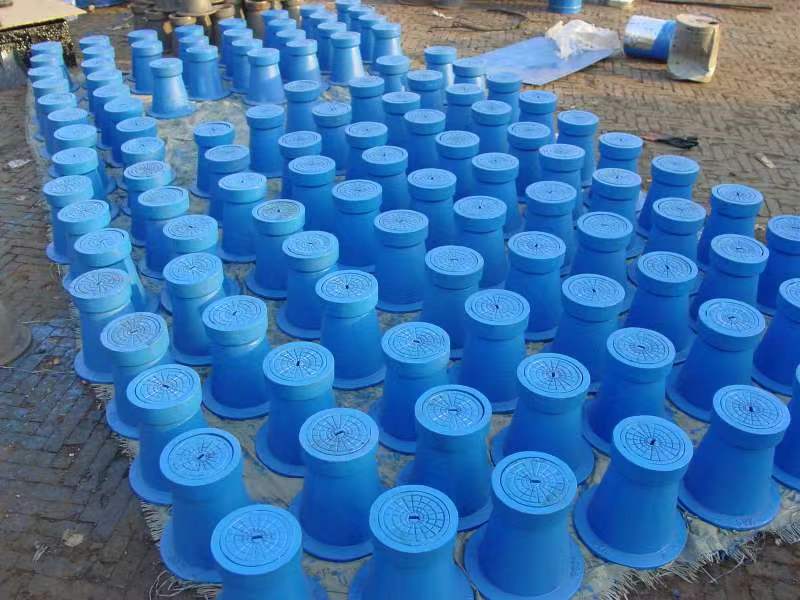Internal Recessed Access Cover for Efficient Utility Maintenance and Safety Solutions
Understanding Internal Recessed Manhole Covers An Overview
In urban infrastructure, manhole covers play a critical role in ensuring safety and accessibility to underground utilities. Among the various types of manhole covers, the internal recessed manhole cover stands out due to its unique design and functionality. This article explores the characteristics, applications, and advantages of these covers, shedding light on their significance in modern urban planning.
What is an Internal Recessed Manhole Cover?
An internal recessed manhole cover is designed with a recessed area in its interior, which allows for the placement of various types of surface materials such as tiling, asphalt, or concrete. This design not only helps to blend the cover with the surrounding pavement but also enables it to withstand the stresses of daily traffic while providing a seamless appearance. The recessed design offers both aesthetic and practical benefits, making it a preferred choice in many urban environments.
Key Features
1. Aesthetic Integration The primary advantage of an internal recessed manhole cover is its ability to incorporate surface materials. This feature allows for creative and uniform street designs, reducing the visual impact of manhole covers on streetscapes. This is particularly important in high-traffic areas such as shopping districts, plazas, and historical sites.
2. Durability These manhole covers are typically made from robust materials like ductile iron, which can withstand heavy loads, ensuring their longevity and performance. They are designed to resist deformation and cracking under the pressures of vehicles, pedestrians, and environmental factors.
3. Safety Considerations Internal recessed covers are designed to be flush with the surrounding surface, minimizing tripping hazards for pedestrians and enhancing safety. The smooth surface also prevents water pooling, reducing the risk of slipping during rain.
4. Ease of Maintenance Accessing underground utilities is crucial for maintenance and repairs. Internal recessed manhole covers can be easily removed, facilitating quick access to sewer systems, electrical lines, and water pipelines, thereby reducing downtime in urban infrastructure.
Applications
Internal recessed manhole covers find use in a variety of settings
internal recessed manhole cover

- Urban Areas In bustling city environments where aesthetics are crucial, these covers blend seamlessly into the landscape, helping maintain an attractive streetscape. - Commercial Spaces Shopping centers and commercial districts benefit from the aesthetically pleasing design of recessed manhole covers, which do not disrupt the visual uniformity of walkways and entrances.
- Parks and Recreational Areas In parks, recessed manhole covers offer a safe and visually appealing solution, ensuring that visitors can enjoy the natural beauty without being distracted by utilitarian infrastructure.
- Transportation Hubs Airports, train stations, and bus terminals often utilize recessed covers to maintain a clean and integrated appearance while managing heavy foot traffic.
Advantages
The advantages of using internal recessed manhole covers extend beyond aesthetics
- Enhanced Longevity Their robust construction ensures that they can handle the rigors of high-traffic environments. The resistance to wear and impact extends their lifespan compared to traditional flat manhole covers.
- Improved Public Safety By remaining flush with surrounding surfaces, these covers reduce the likelihood of accidents, providing a safer environment for pedestrians and vehicles alike.
- Cost-Effectiveness Although initial installation may be slightly higher than traditional covers, the long-term savings in maintenance, replacement, and liability reduction make internal recessed manhole covers a financially sound choice for city planners.
Conclusion
In conclusion, internal recessed manhole covers are a vital element of contemporary urban infrastructure. Their aesthetic appeal, durability, and functionality make them an excellent choice for a wide range of applications, from busy city streets to serene parks. As urban areas continue to grow and evolve, incorporating such innovative solutions will be crucial in creating safe, attractive, and functional public spaces. Understanding the significance of these covers not only contributes to better urban planning but also enhances the quality of life for residents and visitors alike.
-
The Smarter Choice for Pedestrian AreasNewsJun.30,2025
-
The Gold Standard in Round Drain CoversNewsJun.30,2025
-
The Gold Standard in Manhole Cover SystemsNewsJun.30,2025
-
Superior Drainage Solutions with Premium Gully GratesNewsJun.30,2025
-
Superior Drainage Solutions for Global InfrastructureNewsJun.30,2025
-
Square Manhole Solutions for Modern InfrastructureNewsJun.30,2025
-
Premium Manhole Covers for Modern InfrastructureNewsJun.30,2025
